

As editorial staff at the Index continue cataloging our physical backfiles, which contain over 200,000 photographs of works of art in sixteen media categories, we are happy to announce that at last, all our print records of gold glass objects have been fully digitized in the Index database! In gold glass, an image in gold leaf is fused between layers of glass. Gold glass was a favored art form in Hellenistic Greece and during the Roman period, often decorating the bases of feasting vessels, such as bowls, cups, and plates, with hidden pictures that would slowly be revealed during the consumption of food and wine. The newly digitized “Gold Glass” backfiles document over 650 objects from about 60 locations. Most examples are identified as vessels, medallions, or plaques (Fig. 1).
The glittering portraits on these glass objects, now mostly fragmentary, are usually bust length and often show whole families. These are classified under the Index subject “Family Group,” while the subject “Married Pair” is used for images depicting a bride and groom, sometimes crowned by Christ. Gold glass objects are frequently associated with marriage celebrations, and several pieces retain the names of the men and women depicted with inscriptions of good wishes. Frequently, this inscription is the Latin drinking toast “PIE ZESES” (“Drink to live,”), either in full or abbreviated, although a fourth-century gold glass fragment from Rome, now in the British Museum, bears the more sentimental words “DVLCIS ANIMA VIVAS” (“Sweet soul, may you live [long]”) around the heads of the newlyweds (Fig. 2).

Several gold glass objects contain other paired figures, especially Peter and Paul the Apostles, as the patron saints of Rome, and Adam and Eve, commonly represented in the Fall of Man scene. Old Testament narratives and figures, such as Moses, Abraham, Daniel, and Jonah were popular, and Christian miracles were also frequently depicted on vessels. The Index database contains just over fifty miracle scenes executed in the gold glass medium, including the Raising of Lazarus, the Miracle of Loaves, and the Wedding at Cana, suggesting that healing themes held some favor among patrons. The objects may also have served a commemorative function.
Some surviving gold glass objects contain Jewish iconographic motifs, including the Temple implements, such as the menorah, shofar, etrog, and Torah Ark. These implements can be found in the Index database by browsing the Subject list, or by searching for “gold glass” as a term and filtering by the Style/Culture “Jewish.” Mythological figures and narratives from the classical world were also favored subjects to depict on gold glass vessels. The Herculean labors, sea-nymphs, and cupids can be identified on some fragments. Other well-represented motifs in the medium include the “Good Shepherd,” which has iconographic connections to the ancient Greek ram-bearing cult figure Kriophoros. There remains much to discover and assess about images in gold glass and their meanings, production, and patronage throughout the late antique, Roman, and Byzantine periods, making the Index an essential study tool. Now, with increased access, more researchers can learn how this rather fragile art form documents fashion, commerce, rituals, and historical names and epigraphs from ancient daily life (Fig. 3).

The Index gold glass backfiles received significant attention by Ryan Gerber, our 2019 summer intern from the Rutgers School of Communication, who is now a Marquand Art Library Collections Specialist. Gerber inventoried the collection and wrote about his impressions in a blog post called “A Face in Gold Glass.” After Henry D. Schilb, Index Art History Specialist in Byzantine Art, finished adding the collection with the help of Gerber’s inventory, he noted that many gold glass objects recorded in major nineteenth century catalogs did not survive into the modern era. Thus, the publications that earlier Index catalogers used in their research may have contained the last known record of an object’s existence. Schilb said, “it was surprising to learn that many of the gold glass objects entered into the Index files have been lost to time, and at least one of them was apparently reduced to dust in the collection where it was last recorded. Not surprisingly, we have also simply lost track of several examples that were originally cataloged by Indexers before the Second World War.” With too little information to go on, the Index cataloger can sometimes upload only a drawing from the catalog and record only a “Last Known Location” for objects presumed lost to history. When we just don’t know where something is, we indicate this in the database by giving “Unknown” as the current location with a “Last Known Location” to identify the place where an item was last known to exist. This can apply to items that we know to have been destroyed, but it also applies frequently to items that are either simply lost or are now in unidentified, private collections. Although the Index can sometimes discover an object’s true current location, that bit of data can sometimes elude us, so we always welcome intelligence from anyone who might have a good lead!
It is a great achievement when we can complete an entire category in the backfiles with newly researched information, including updated location names, fuller iconographic descriptions, and new or updated terms from Index vocabularies to expand the findability of work of art records. We ought to be clear, however, that we do not claim to have recorded every known example of any medium or type of object. That must remain an ongoing project. Nevertheless, the whole Index team is thrilled to make the gold glass corpus of the original Index card catalog fully available in the database. If you want to see for yourself, you can browse “gold glass” records by Medium more fully here: https://theindex.princeton.edu/s/list/ListMediums.action. You can also reach out to us with any inquiry here: https://ima.princeton.edu/research-inquiries/. Please let us know how the Index can improve the records we have, or find out how the Index can serve your own research needs.
Cheers!
Further Resources
Garrucci, Raffaele. Vetri ornati di figure in oro: Trovati nei cimiteri dei cristiani primitivi di roma. Rome: Tipografia Salviucci, 1858.
Deville, Achille. Histoire de l’art de la verrerie dans l’antiquité. Paris: Morel, 1871.
Vopel, Hermann. Die Altchristlichen Goldgläser: Ein Beitrag zur altchristlichen Kunst- und Kulturgeschichte. Freiburg im Breisgau: J. C. B. Mohr, 1899.
Morey, Charles Rufus. The Gold-Glass Collection of the Vatican Library: With Additional Catalogues of Other Gold-Glass Collections, ed. Guy Ferrari. Vatican City: Biblioteca apostolica vaticana, 1959.
Meek, Andrew. New Light on Old Glass: Recent Research on Byzantine Mosaics and Glass. London: British Museum Press, 2013.
Howells, Daniel Thomas. A Catalogue of the Late Antique Gold Glass in the British Museum. London, British Museum Press, 2015.
The Index staff is pleased to announce the relaunch of the Index’s digital image collections, which have recently undergone a massive upgrade. The updated platform hosts ten collections of images generously donated to the Index and made freely accessible to the public through the Index website. These unique documentary resources include more than 50,000 images of medieval art and architecture and reflect the varied interests and travels of their twentieth-century photographers. They represent a range of subjects, techniques, and media, including English medieval embroidery, medieval and Byzantine manuscripts, European choir stall sculpture and stained glass, and Gothic and Romanesque architecture.

Although the images in these collections have not been cataloged with the same level of detail as those in the iconographic database, every effort has been made to assign them basic information regarding location, date, and in many cases, iconographic subjects. The latter can be found in browse lists that include a variety of iconographic topics, including saints and martyrs, animals, zodiac, occupations, and secular and religious scenes, all updated to follow the current subject standards of the main Index database. Browsing these subject lists reveals much about each collection. For instance, the subject list for the “Opus Anglicanum” database—an image collection of medieval English needlework on ecclesiastical and secular textiles—includes numerous saints especially venerated in England, with multiple scenes for Margaret of Antioch, Nicholas of Myra, and Thomas Becket.
Browsing the subject list of another collection, the Elaine C. Block database of misericords, reveals the wide variety of drôleries that decorated the wooden under-seat structures: fantastic creatures, battling animals, and figures playing in sports and games, engaged in occupations, or enacting proverbial lessons. John Plummer’s database of medieval manuscripts includes large numbers of biblical and apocalyptic images, including scenes with Christ, David, and the Virgin Mary, and other popular saints found in late medieval prayer books. The subjects in Plummer’s collection closely resemble those found in Jane Hayward’s collection, perhaps reflecting the shared interests of two scholars were curators at major collections in New York City during the second half of the twentieth century.

The Gabriel Millet collection comprises the study and teaching images of that scholar, an important archaeologist and historian of the early twentieth century who specialized in Byzantine art. Subjects represented here include multiple biblical figures and scenes, but also Byzantine generals and emperors and several text subjects, such as the Chronicle of Manasses and the biblical psalms by number.
The Gertrude and Robert Metcalf Collection of Stained Glass is a documentary treasure for the study of Gothic stained glass. The Metcalfs, who were both stained glass artists and experienced photographers, took more than 11,000 images of stained glass from European monuments, covering sites in Austria, England, France, Germany, and Switzerland. Their images of stained glass windows are a fascinating record of a fragile artistic medium, captured during fragile times. Their travels coincided with the dawn of World War II in Europe over the years 1937 and 1939, and they produced a body of documentary evidence that became critical to postwar restoration efforts. A look at the Metcalf subject list reveals many of the expected themes in medieval iconography, but also significant iconographic cycles for several French bishops, such as Austremonius and Bonitus of Clermont, Germanus of Auxerre, and Martialis of Limoges.
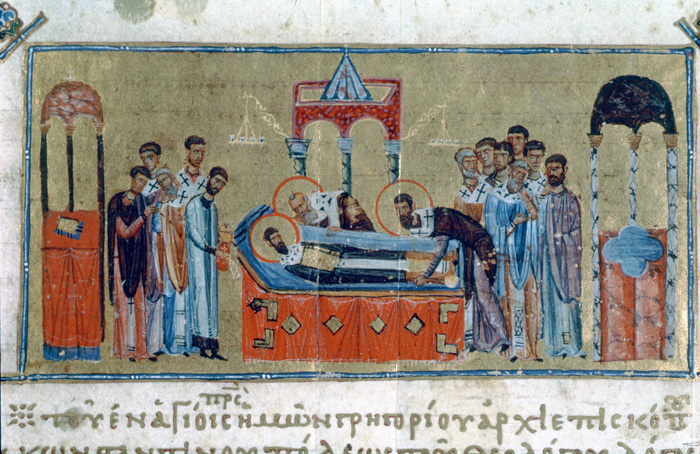
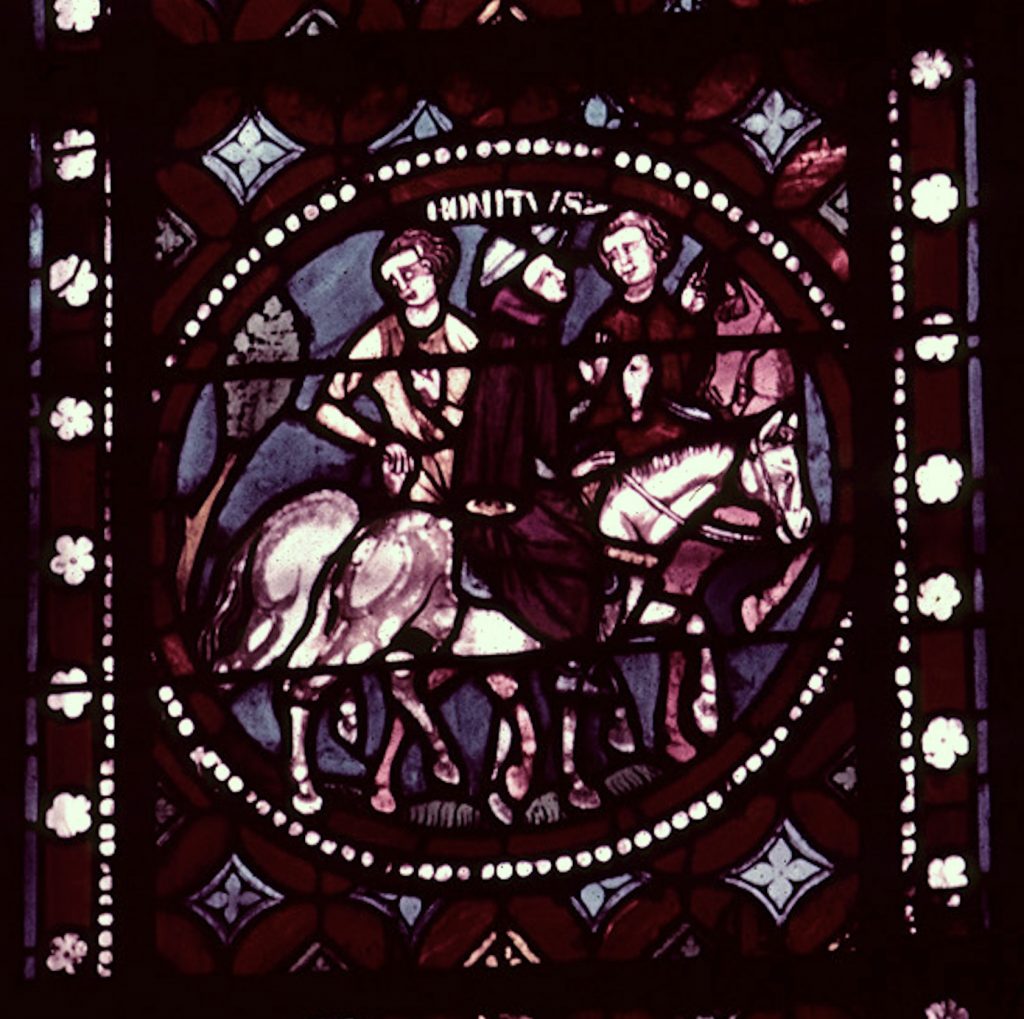
Geographically, the collections cover country and city locations in four continents—Europe, Africa, Asia, and North America—from obscure sites to famous ones, and they include many types of repositories, from in-situ locations to museums, libraries, and private collections. To better accommodate browsing by region, locations in all the collections have been formatted to begin with the country. Each collection is introduced with general information about its history, scope, and image use policies. It has been satisfying to edit and release these collections—now with more consistent information and a more secure digital platform—knowing that they are now more useful to scholars. Your feedback on the collections is welcome via this form.

This summer The Index of Medieval Art welcomed two students from the Master of Information program at Rutgers University to inventory the Index’s photographic archive. Comprising nearly two hundred thousand cards in sixteen different medium categories, this historic image collection provides researchers a rich resource of sometimes rare visual references for the study of art produced throughout the Middle Ages. The inventories undertaken by Ryan Gerber and Michele Mesi have illuminated the extent of the archive and helped to assess the image and cataloguing needs for ongoing research and cataloguing at the Index. In this special two-part blog post, we are pleased to present their observations and accounts of their experiences.
It is a testament to the Index’s stimulating power that, despite my lack of an art-historical background, I found myself entranced by the system of cataloguing medieval iconography that the Index pioneered and is still practicing to this day. Its vision of greater accessibility through complete digitization represents another milestone in its long history, and one which will be a gift to scholars of all persuasions and experience levels.
A system largely developed by Index director Helen Woodruff in the 1930s, the photographic archive is organized in the first place by medium, then by location, object type, and the numeric order within that group. Unique codes on the left-hand corner of every index card in the catalogue represent each of these levels of organization. The fruits of this labor are hard to miss after spending any time with the Index and its elegantly interwoven subject index and photographic archive, where one can move seamlessly from subject description to pictorial representations and vice versa.
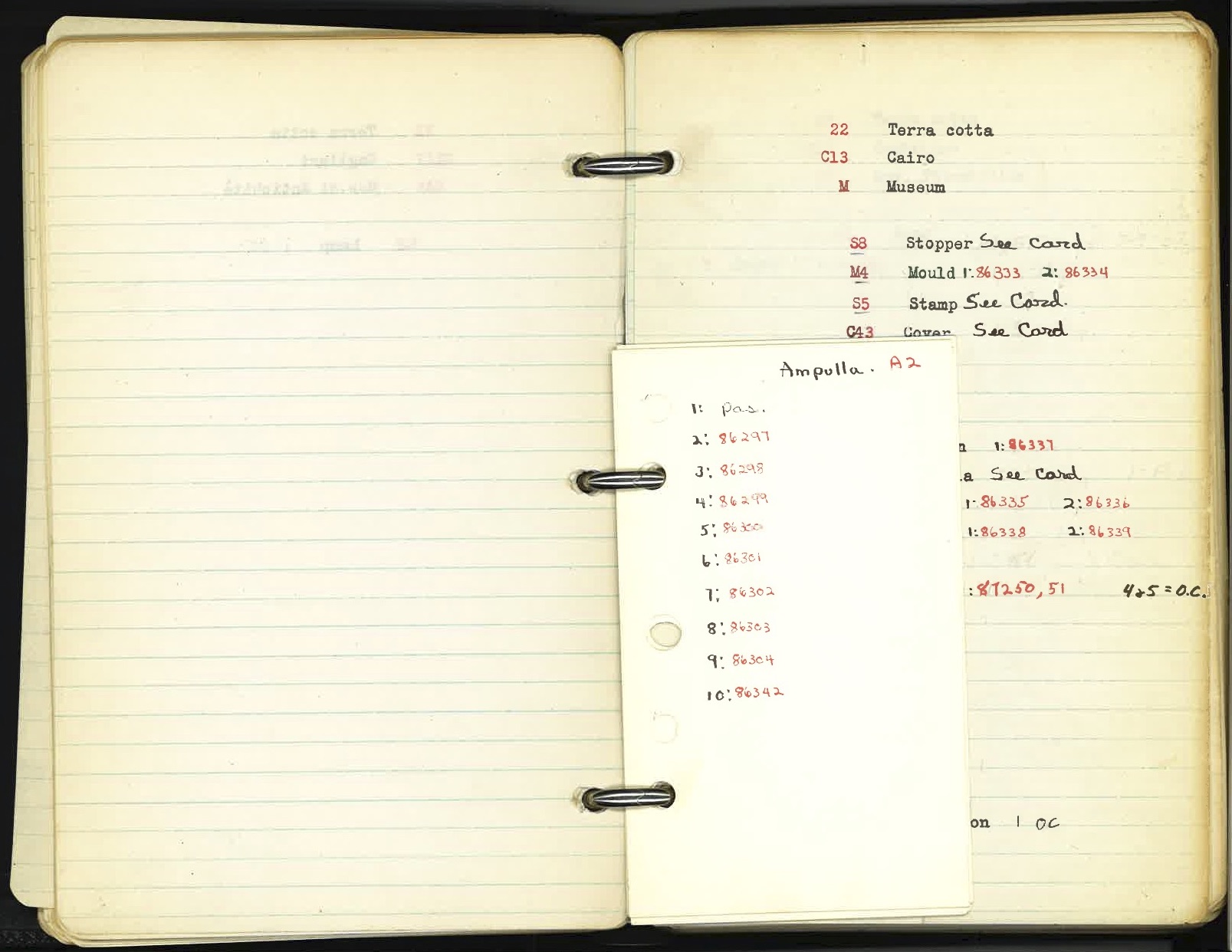
This work has also left behind a trove of archival resources such as hundreds of rolls of film and the so-called “Black Books” that were used to track the negative numbers. Each of the medium categories I inventoried not only laid the groundwork for further analysis of the collection as a whole, but highlighted the Index’s remarkable century-old ability to generate new curiosities and paths of inquiry.
Terracotta, Temporary Cards, Lamps, and Lions
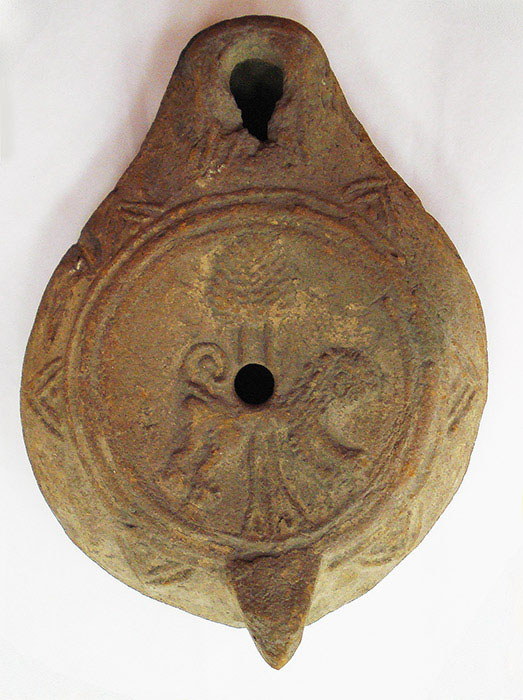
Under the medium “Terra Cotta”—a mixture of clay and water that is formed and baked or fired—the Index records more than twenty-five hundred objects across 196 locations. Of these objects, about sixty-five percent of them are oil lamps. The inventory of these files revealed some of the more common iconographic motifs found on terracotta objects, which include foliate ornament, a variety of land animals and birds, symbols such as crosses, as well as inscriptions and monograms. One terracotta lamp from the Benaki Museum in Athens depicts two of these popular motifs—a lion and a tree—combined on one impressed discus (Fig. 1).
Most photograph cards contain representations of the objects, but they also record the object’s location, the photograph’s negative numbers, subject headings for the image or images on the object, and some bibliographic information. However, there are many temporary “Orange Cards” in the archive that contain only a bibliographic reference and a subject term, and these still await corresponding images. Their inclusion in the original system nonetheless provides important data points about the objects they describe, laying the groundwork for future cataloguers to source the images for these object records. For example, the Index’s photo archive of terracotta objects in the National Museum at Carthage is mostly Orange Cards because the original Index records of these objects derive from a 19th-century publication with very few illustrations. While it would be useful to see images of the “lions” held at the National Museum in Carthage, even in the absence of photographs it may be just as useful to know that, of the 970 terracotta lamps held in that location, nearly four hundred depict animals, and about sixty-five of those include a lion.
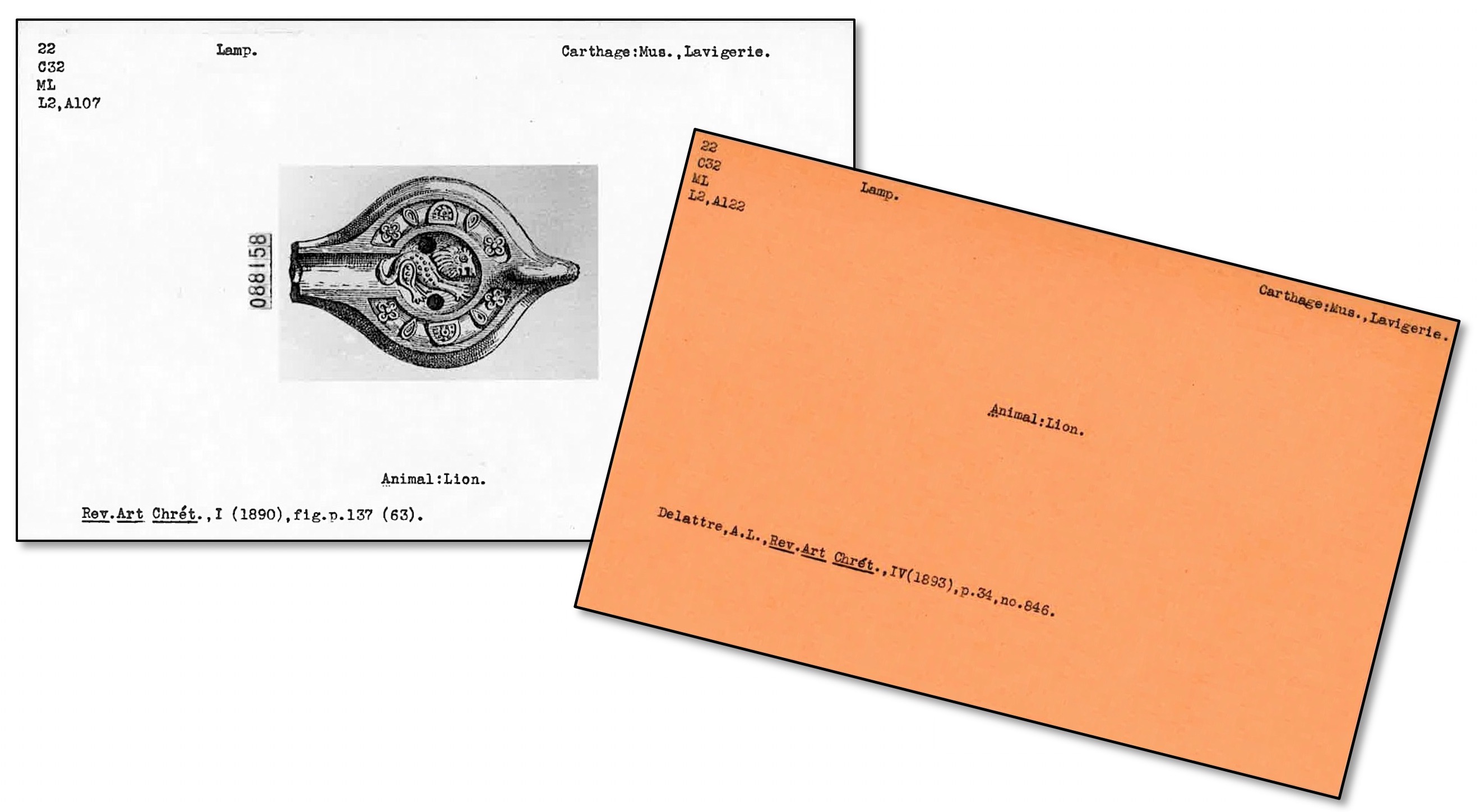
A Face in Gold Glass
The “Gold Glass” files record over 650 objects across sixty-three locations dating mostly from late antiquity between the 3rd and 7th centuries. Of these objects, nearly half are vessels of some kind. Gold glass developed as a medium in the ancient Roman and Hellenistic periods and consisted of decorative engravings made in gold leaf, which were then sandwiched between fused layers of glass. The result was lavish decoration, and exemplary pieces in this medium offer strikingly detailed portraits of their subjects, often depicting married pairs, family groups, or religious figures associated with one another, such as Saints Peter and Paul. Historians have noted the rarity of gold glass, as well as its costly, specialized method of production.[1]
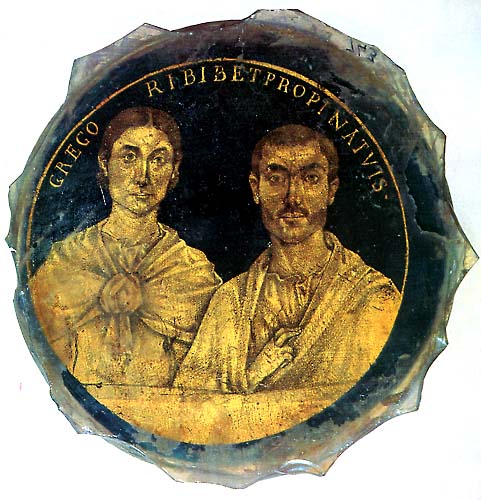
Gold glass was a special interest of Index founder Charles Rufus Morey, and his pioneering catalogue of the Vatican Library’s collections features as its first entry an example also catalogued by the Index. It shows the busts of a married couple inscribed above with the name Gregori and a Latin equivalent of “cheers!”: “Gregori bibe [e]t propina tuis,” or “Gregory, drink and drink to thine!” (Fig. 2).[2]

Another interesting discovery in the “Gold Glass” category was a round vessel fragment last recorded in the Cabinet des Médailles in Paris. It depicts a striking bust of a figure with shorn hair, dressed in a trimmed tunic, and with a distinctive crescent shape on their forehead. The only other information on the photograph card was the source of the image, the antiquities catalogue that Anne-Claude-Philippe de Caylus published in seven volumes from 1756 to 1767.[3] Caylus’s catalogue was a valuable starting point for identifying this figure, whose iconographic description had not been entered in the Index’s subject files or the database. A little more searching led to a color image in a French catalogue, the Histoire de l’art de la Verrerie dans l’Antiquité (Fig. 3), and to the conclusion that the inscription “SAPPO FLACILLAE”—with the genitive form of the empress’s name—referred to a branded enslaved person who had been freed by the Roman Empress Aelia Flacilla (356–386). We also used the photo-editing web application Pixlr to create a positive image of “Sappo” so that the image from the Index archive can now be seen as it appeared in the catalogue of the comte de Caylus (Fig. 4).
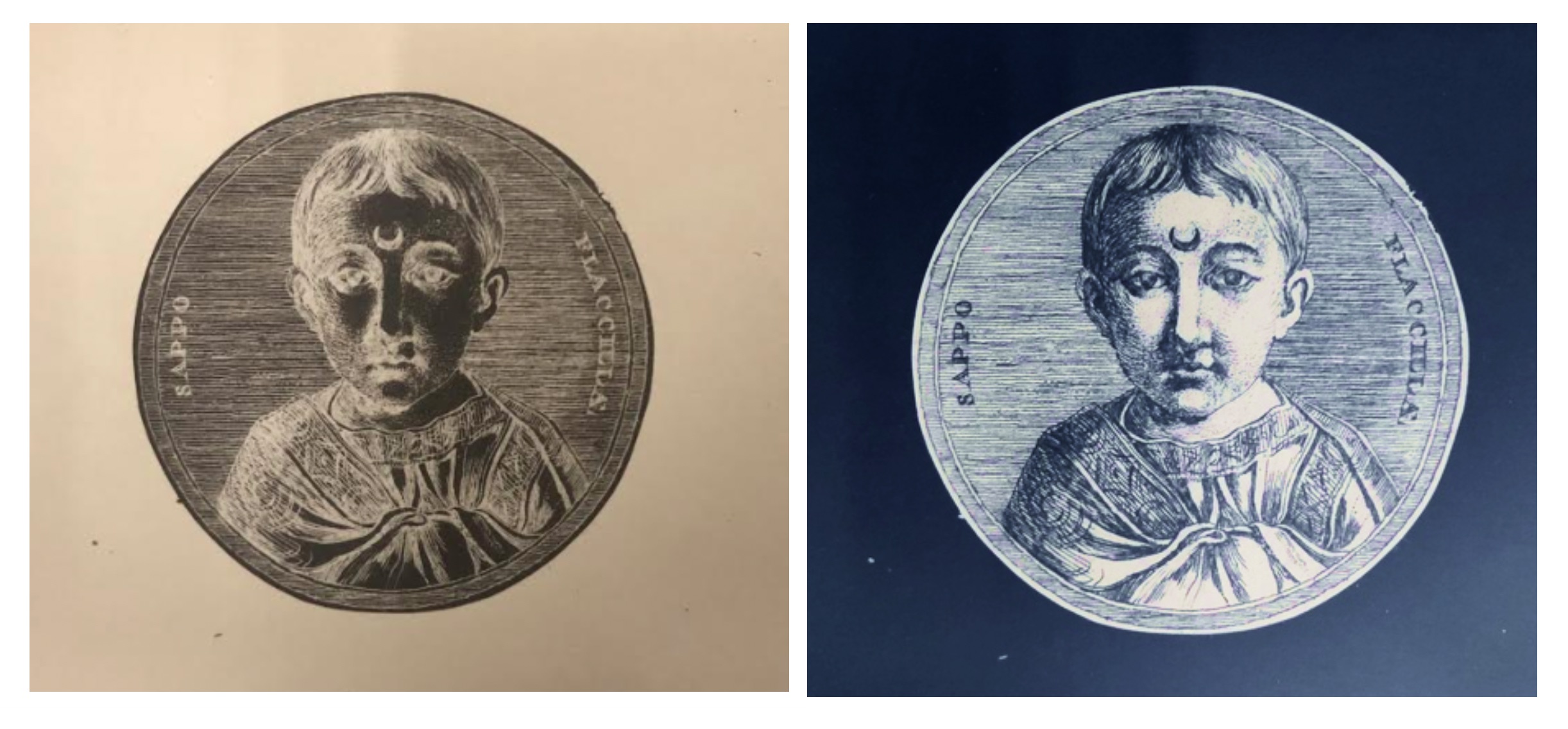
Impressions in Wax
Comprising a little over one thousand objects in 105 locations, the “Wax” medium files are overwhelmingly made up of stamps from Europe dating largely to the 13th and 14th centuries. Although the archive groups these objects into the single object category “Stamp,” the Index database divides them into two Work of Art Types, “Seal Matrix” (that is, the tool used to make the impression) and “Seal Impression” (that is, an impression made by a matrix).[4] Viewing about a thousand examples of Gothic seals intended for both religious and secular officialdom brought into literal relief the development of the production of seal dies from simple figural representations to complex ecclesiastical chapters in miniature, such as the Stamp of Ely Priory, dated to about 1240–1260 (Fig. 5). Other favored subjects in wax seals include heraldry, nobles, and popular saints and bishops, like Thomas Becket. The wealth of iconographic information in the “Wax” files—indeed throughout the archive—emphasizes that the Index is not a closed system, and has at every turn great potential for leading one into new areas of inquiry.

Ryan Gerber is a graduate student at Rutgers University studying Information Science with a concentration in Archives and Preservation. He holds an MA in English from The College of New Jersey with a concentration in Medieval and Early Modern Literature. His interests include digital preservation and retrieval, the digital humanities, and information behavior.
See Part 2 written by Michele Mesi.
[1] Giulia Cesarin, “Gold-Glasses: From their Origin to Late Antiquity in the Mediterranean,” in Things that Travelled: Mediterranean Glass in the First Millennium AD (London: UCL Press, 2018), 22–45.
[2] Morey noted of the inscription that “the E of ‘bibe’ or of ‘et’ [was] omitted by mistake.” Charles Rufus Morey, The Gold-Glass Collection of the Vatican Library (Vatican City: Biblioteca Apostolica Vaticana, 1959), 1. Translation after Georg Daltrop in Leonard von Matt, Georg Daltrop, and Adriano Prandi, Art Treasures of the Vatican Library (New York: Abrams, [1970]), 168.
[3] Anne-Claude-Philippe de Caylus, Recueil d’antiquités égyptiennes, étrusques, greques, romaines et gauloises (Paris, 1756–57), 193–205, pl. 53.2, https://archive.org/details/recueildantiquit03cayl/page/n10.
[4] See the Index database Work of Art Type browse list to access these Work of Art References.

Precious Gems Containing a Wealth of Iconography

“Glyptic” is among the smaller medium categories in the Index archive, filling only one drawer with a little more than eleven hundred cards that record only about nine hundred objects. The term “glyptics” refers the art of carving gems or seals—whether in intaglio or in relief—typically in gems or precious stones such as jasper, agate, carnelian, and amethyst.[1] This form of art is one of the oldest—known since the Mesopotamian, Egyptian, and Assyrian civilizations—but it was not until the Hellenistic period that relief cameos, seals, and more intricate glyptic objects began to appear.[2]
Glyptics, which were often worn as jewelry or incorporated into ecclesiastical objects, are recorded in the Index primarily as gems, amulets, plaques, rings, and stamps, and the largest category, cameos, which makes up nearly a third of the glyptic objects in the Index files. A significant portion of the subjects on these carved gems include animals and plant life, like doves, dolphins, fish, palm trees, and fantastic creatures. There are other symbols as well, such as the anchor, which appears on over forty examples. A significant number of glyptics incorporate classical and mythological figures, such as Orpheus, Diana, Jupiter, and Hecate. Nearly twenty cards for gem objects record the Gnostic figure Abrasax (Fig. 1). Glyptics such as these were powerful talismans for their owners.
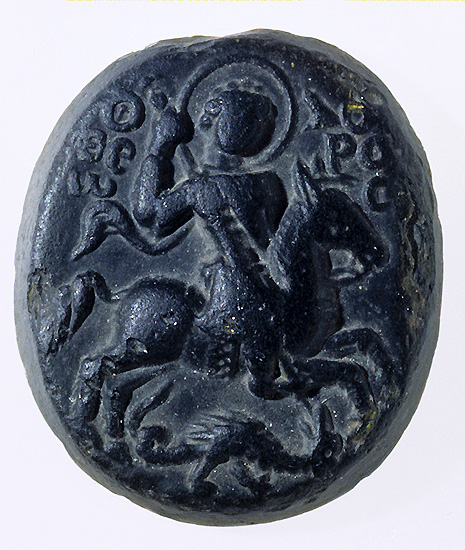
The traditional use of spiritual amulets was also adopted by Christians using Christian symbols and themes.[3] Christian iconography on glyptics include the triumphant Archangel Michael or Saint George, Daniel in the Lion’s Den, and the Good Shepherd. One cameo of opaque black glass made in the 13th century depicts Saint Theodore transfixing the dragon and well represents the preference for saintly imagery on later cameos (Fig. 2).[4] The inventory also revealed that there were nearly thirty examples of incised depictions of monograms on glyptics with a third of them being the Chi-Rho, a symbol for Christ consisting of the first two letters of the word “Christos” (Christ) in Greek.
The major collections represented in this medium include the Staatliche Museen in Berlin (over eighty objects) and the British Museum in London (nearly 125 objects. However, a large number of glyptics (over 140 objects) are recorded as “Location Unknown,” these items having been entered into the Index from major publications that did not provide the precise location at the time of publication.
Radiant Ivories for Both Secular and Religious Narratives

With nearly forty-seven hundred cards covering a little over thirty-one hundred objects, Ivory represented a more extensive category in this inventory project. The types of ivory objects recorded by the Index range from plaques, chess pieces, croziers, and triptychs to the more unusual oliphant (or hunter’s horn) to the handles of various utensils, and even a saddle. Some of the major collections represented in this medium are the Musée du Louvre and the Musée de Cluny in Paris, and the British Museum and the Victoria and Albert Museum in London. Ivory objects were expertly carved in minute detail, usually from the tusks of elephants. In the Index database, ivory acts as a “parent medium,” an umbrella covering such materials as bone, walrus tusks, and antlers.[5]
Various motifs of courtly love were often depicted on ivory caskets, plaques, mirror cases, combs, and other fine domestic objects.[6] A preference for secular subjects on ivories emerged in the twelfth century when an influx of secular imagery was brought to Europe from the Middle East after the Crusades, as well as through a rise in vernacular literature, legends, and romances.[7] Entertaining stories such as the tale of the Virgin and the Unicorn provided plenty of thematic material to adorn precious ivory objects. They often offered a double meaning or moral lesson, as in the story of Tristan and Isolde depicted on an early 14th-century ivory casket now in the Metropolitan Museum of Art, which warns against temptations of lust (Fig. 3).[8]
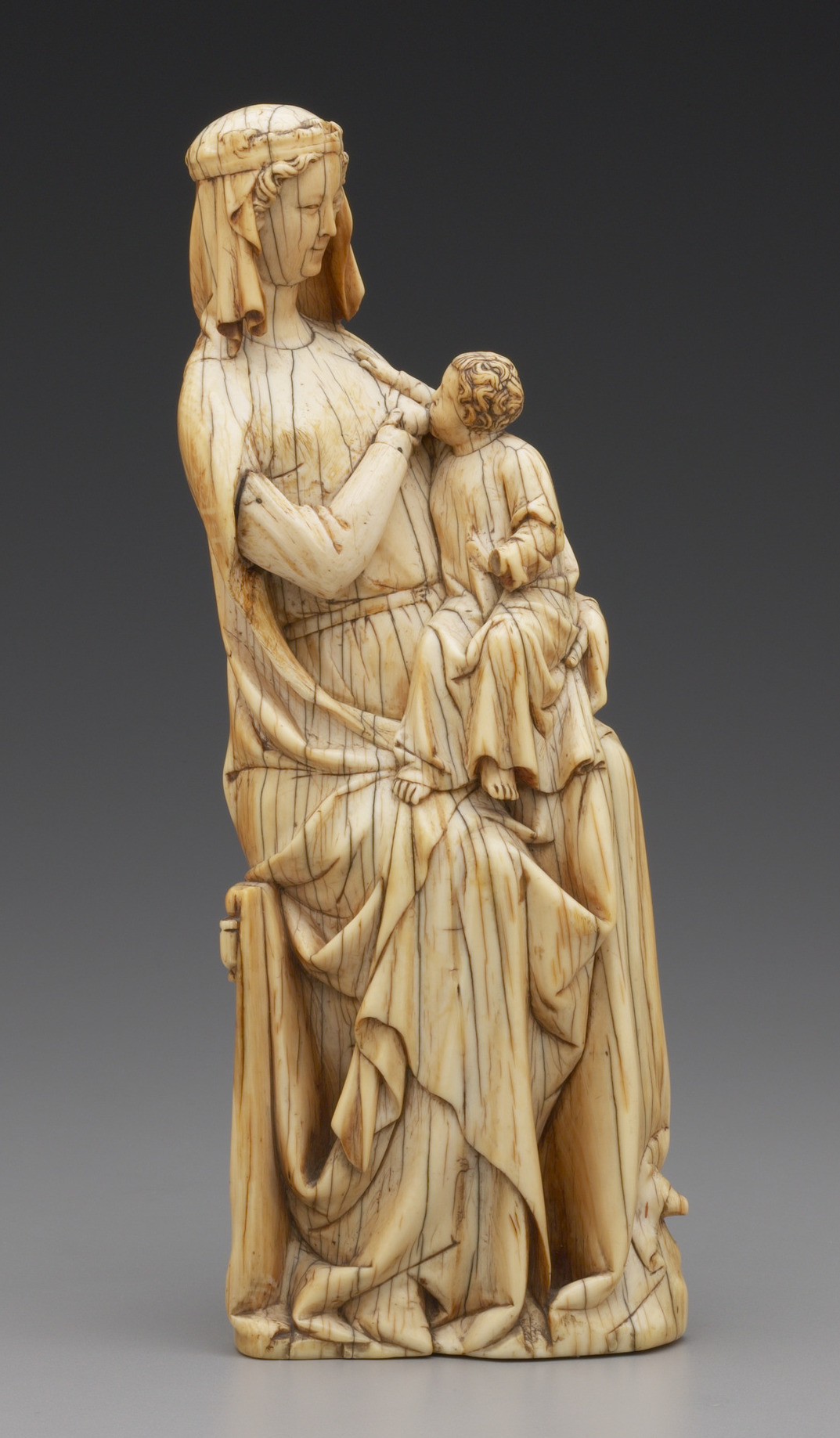
Despite their popularity, secular ivories are fewer in number than devotional works of art in ivory. Roughly a quarter of the ivory objects recorded in the Index are representations of the Virgin Mary and the Christ Child. This figure rises to more three quarters when we add individual figures of Christ or the Virgin Mary. One type seen rather frequently is that of the Virgin nursing the infant Christ—known in Latin as the Virgo Lactans—which the Index categorizes among the many “types” of the Virgin Mary and Christ Child. In the database, the subject heading Virgin Mary and Christ Child, Suckling Type is attached to over 290 Work of Art records. More than forty of these are ivory. This Virgo Lactans iconographic type is exemplified by a 14th-century ivory statuette in the Yale University Art Gallery, which displays an intimate and lifelike relationship between mother and child (Fig. 4). Thus, the devotional message is made personal.
The Project Continues …
Encompassing eight drawers of roughly one thousand cards each, “Painting” proved to be an abundant medium, but “Illuminated Manuscript” is by far the largest medium category in the Index, filling fifty-six of the photograph drawers. Medieval art objects encountered in these two categories range from painted icons and altarpieces to a wide variety of liturgical manuscripts and other illuminated books numbering perhaps in the thousands. The inventory of these and other remaining categories—including those comprising in situ works of monumental art, such as “Mosaic” and “Fresco”—will continue after this summer.
As a “living archive” that covers more than a millennium of artistic creation, the Index of Medieval Art has always been improved and expanded by the interactions of the cataloguers who create it with the with researchers who use it. Creating these inventories has been an illuminating way to participate in that process and to learn more about the contents of the Index card catalogue being prepared for entry into the online database. This project was challenging at times, due to the sheer breadth of the paper files, but it has been an invaluable undertaking for the ongoing process of research and digitization, and will improve accessibility to the records contained in this century-old archive of medieval art.
Michele Mesi is a graduate student at Rutgers University studying Information Science with a concentration in Archives and Preservation. From Rutgers University, she also holds a Bachelor’s degree in English with studies in Art History and in Digital Communication, Information, and Media. Her interests include art conservation, archival processing, and working with rare books and manuscripts.
See Part 1 written by Ryan Gerber.
[1] The Index of Medieval Art follows the standards for material description established by the Getty Art & Architecture Thesaurus (AAT). See the Art & Architecture Thesaurus® Online, https://www.getty.edu/research/tools/vocabularies/aat/.
[2] O. Neverov and A. Durandin, Antique Intaglios in the Hermitage Collection (Leningrad: Aurora Art Publishers, 1976), 7.
[3] Neverov and Durandin, Antique Intaglios, 8.
[4] The Index records the iconography in question as Theodore Tyro or Theodore the General, Slaying Dragon.
[5] See the glossary entry on the Index database Medium browse list for “ivory.”
[6] J. Lowden and J. Cherry, Medieval Ivories and Works of Art: The Thomson Collection at the Art Gallery of Ontario (Art Gallery of Ontario, 2008), 122.
[7] R. H. Randall, “Popular Romances Carved in Ivory,” in Images in Ivory: Precious Objects of the Gothic Age (Detroit Institute of the Arts, 1997), 63.
[8] Randall, “Popular Romances,” 67–68.
Third in a series of short blog posts introducing new features of our online database
Have you tried out our Medium filter yet? As part of our ongoing series introducing specific features of our database to assist you in developing research strategies, let us direct your attention to the Medium field. First, you may ask, what exactly do we mean by “Medium”? In the Index database, “Medium” refers both to the materials that compose the work of art and to the methods of facture or technique employed in its creation. As Herbert Kessler rightly observes, “matter mattered in the Middle Ages,” and we at the Index wish to foster exciting new scholarship related to the iconography of materials.[1] A cursory glance at our Medium category under the “Browse” tab reveals an extraordinary array of materials and techniques. Objects may include materials ranging from “acacia” wood to “zeiler sandstone,” and all these materials might have been “hammered” and “punched,” or “chiseled” and “incised,” or subjected to many other possible means of manipulation.
But what if you are not ready for this level of specificity? For more general Medium searches, we have devised a series of basic category terms to help you find what you need: “stone,” “gems,” “wood,” “ivory,” “metal,” “enamel,” and “textile.” For example, let’s say you’re interested in representations of the Virgin Mary in any kind of stone. A keyword search for “Virgin Mary” on the database homepage will yield thousands of results in all media. So, if you want to limit your results to images in stone, simply find the “Filters” tab under “Advanced Search” and select “stone” under the Medium filter. Click on “Search,” and you will reduce your list to 1,752 records.
Now what if you know that you’re searching for representations of the Virgin Mary in a specific kind of stone? This time, let’s say you’re looking for marble sculpture. Instead of sifting through all 1,752 records for marble examples, just try selecting “marble” in the Medium filter. This should bring your results down to a mere 410 records.
You can also try refining your search with another filter. Interested in marble representations of the Virgin produced in medieval France? Add “France” in the Location filter, and you’ll narrow your results to 55 records.
So, whether you’re searching within broad categories or examining specific materials and techniques, try using the database’s Medium filter to adjust your search to your research interests.
Here are a few additional pointers:
So, as you undertake your research with us, we hope that you’ll give the Medium filter a try. As always, please feel free to send us questions or comments about any aspect of the IMA database. Contact us at theindex@princeton.edu. Matter matters…and so does your feedback!
[1] Herbert Kessler, Seeing Medieval Art (Peterborough, Ont.: Broadview Press, 2004), 14.
Second in a series of short blog posts introducing new features of our online database
Have you tried our Language Filter yet? Since we at the Index of Medieval Art realize that some of the search features available to users of the new database may be unfamiliar, we thought that we ought to take some time to recommend and explain a few of them. This time, let’s discuss your use of language, shall we? Specifically, did you know that you can filter your searches to look for images that appear in the context of a certain language? Well, you can!
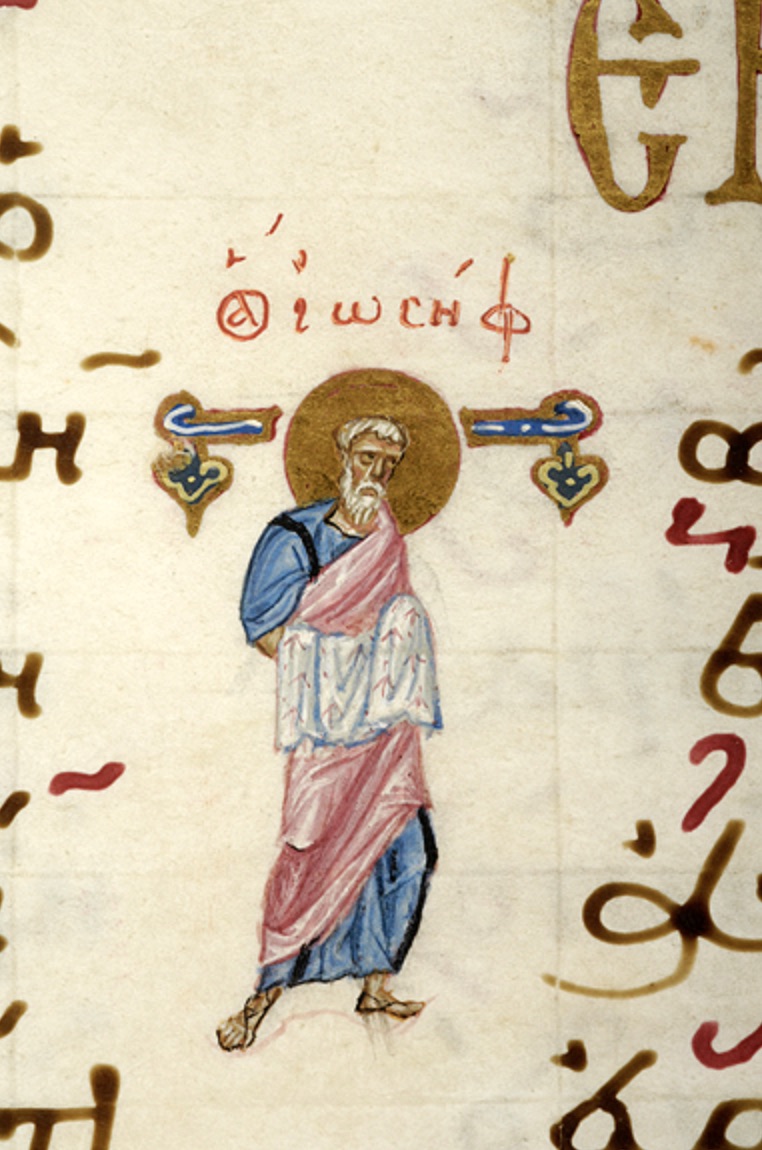
Say you’re interested in images of Joseph of Arimathea, for example, whether in a scene—such as the Deposition or the Entombment—or as an isolated figure. You might start with a simple keyword search for “Arimathea” on the database homepage, or you could also use the “Terms” tab on the “Advanced Search” page, checking “Description” and “Subject” in the “Search Fields” checklist, a strategy that currently yields a whopping 735 results.
Now let’s try using one of the filters. Simply switch to the “Filters” tab on the “Advanced Search” page. Feel free to explore, and try all or any of the filters. For the purposes of this demonstration, however, we’re thinking about language, so let’s start by narrowing our search to manuscripts. Simply select “Manuscript” in the Work of Art Type Filter (Example 1), then click “Search” again. You’ll discover that, in this case, you have nearly halved the search results to 373, but that’s still a lot of records to consider.

Now here comes the exciting part! If you know that you’re interested in a particular linguistic context, then you can add the Language Filter to your Advanced Search. There are currently 48 languages to choose from in the Index of Medieval Art database. For this demonstration, we’ve specified Greek (Example 2), so we’re searching for the word “Arimathea” where it appears in either the Subject field or the Description field, only in records for which the Work of Art Type is “Manuscript” and the language of the manuscript is “Greek.” Click “Search,” and you’ll discover that you have been able to filter your results down to a manageable 32 records!
Simple, n’est-ce pas?
You can easily change the Language filter to compare results from one language to another. Changing Greek to Armenian yields ten results. Church Slavonic yields six. Filtering for some languages may return nothing, others quite a lot. Latin, for example, returns 233 results, so you might want to add another filter to your search. For the time being, only the languages of manuscripts are identified in the database. Eventually, however, the Index database will identify the language or languages of every object that incorporates the written word.
You might have noticed that names of some languages include date ranges, as in “Middle English (1100–1500).” Although such dates can seem arbitrary, we try to differentiate among the stages of a language’s development. If you’re curious about how the Index defines a language, or about what sources we cite, you can click on the language name in the Language field of a Work of Art record. This will take you to a page where you can read the Language Details. There you’ll also find citations and external reference codes (Glottolog and ISO 639-3). On that page, there is also a list of all Work of Art References that include that language.
So, start exploring, and be sure to try out the filters available in the new Index of Medieval Art database. Also, please let us know what you think…but mind your language!
First in a series of short blog posts introducing the new features of our online database
Did you know that you can search The Index of Medieval Art for information about patrons of medieval art? The Index records both identified and unidentified patrons, the latter entered as grouping terms for types of patrons (Male, Female, Couple) and major monastic orders, such as Augustinian, Benedictine, and Carmelite. There are also general headings for anonymous male and female patrons (Male, unidentified and Female, unidentified). Names of churches, monasteries, and abbeys are given by their proper titles, such as Canterbury Cathedral, but might be further identified by location (e.g. Abbaye d’Anchin [Pecquencourt, France]).
For an overview of our patron headings, click on Browse at the top of the Index landing page. This will bring you to a list of over 900 names and grouping terms sorted in alphabetical order. To reach a specific entry, type the first few letters of a name into the search line at the top of the list. For instance, typing in “Blanche” will bring you to all Blanches from Burgundy, Castile, France, Navarre, and also the late 14th-century Countess of Geneva. Clicking on any patron heading will return a glossary entry comprising a biographical note with dates, alternate names of the patron, a bibliographic citation, an external reference for the authority source, and all the work of art examples linked to that patron.
Our patron entries are formatted in keeping with standard biographical authorities, such as the Library of Congress Name Authority File, the Virtual International Authority File (VIAF), and Oxford References. Patrons are identified in the Index database by their roles and dates when these are known. When performing an Advanced Search in the “Terms” screen, you may prefer to keep the Match Type set to “Default,” which will search all parts of the heading. In the “Terms” window, a search can be formulated with keywords such as “Pope,” “Doge,” or “Prince,” using “Patron” in Search Fields to locate medieval patrons by their role. Similar keywords, along with keywords for place indicators like “Monastery” or “Convent,” can be searched against the “Patron Note” field, which will search the biographical notes in the patron glossary.
Many of the monastic patrons contain their locations in parentheses after the name of the community, so countries of patronage activity can also be searched as keywords. For instance, searching against “Patron” or “Patron Notes” with the keyword “Italy” returns over 150 records. This indicates artwork results for a patron who was active in Italy. From here, in the “Filters” window, the Date Slider can be used to refine results. The “Terms” search can be refined with any of the additional filters, including “Location,” “Medium,” “Style/ Culture,” and “Work of Art Type.”
Are you interested in finding out which female patrons were active in France in the 14th century?
In the Advanced Search “Terms” screen, enter the keyword “Female” and choose the Search Field “Patron” (keeping Match Type set to “Default,” as recommended).
Then, go to “Filters,” select “France” as a Location, and set the Date Slider to 1300 and 1399. This search should yield 27 examples, where a female patron is connected to the 14th century work made in any part of France.
*In results, please note that work of art records will include Main records indicated with a logo picture.
As you search for patrons in the new Index of Medieval Art database, bear in mind that visual representations of patrons are found in the Subject field. To find images of patrons, you can browse or search the Subject field with the keyword “Donor.” To read more about medieval patronage practices in general, you might find the Index’s 2013 conference publication Patronage, Power, and Agency in Medieval Art of interest. Enjoy refining your searches and browsing the range of patrons we record in the Index! And please remember that we are always happy to have your feedback. Get in touch with us at theindex@princeton.edu.